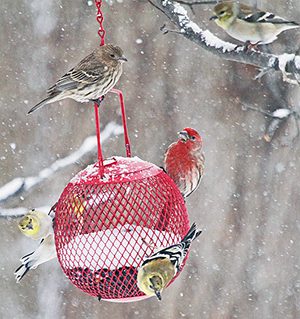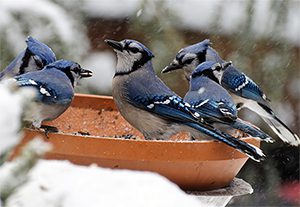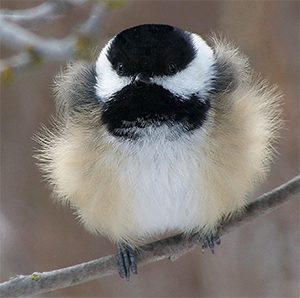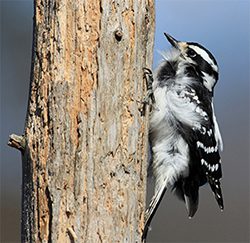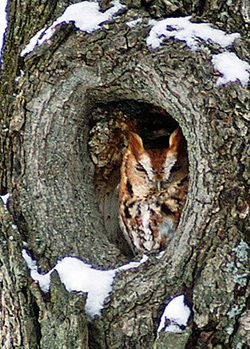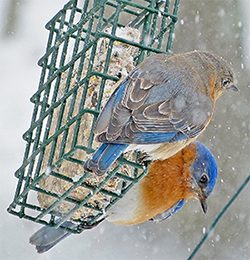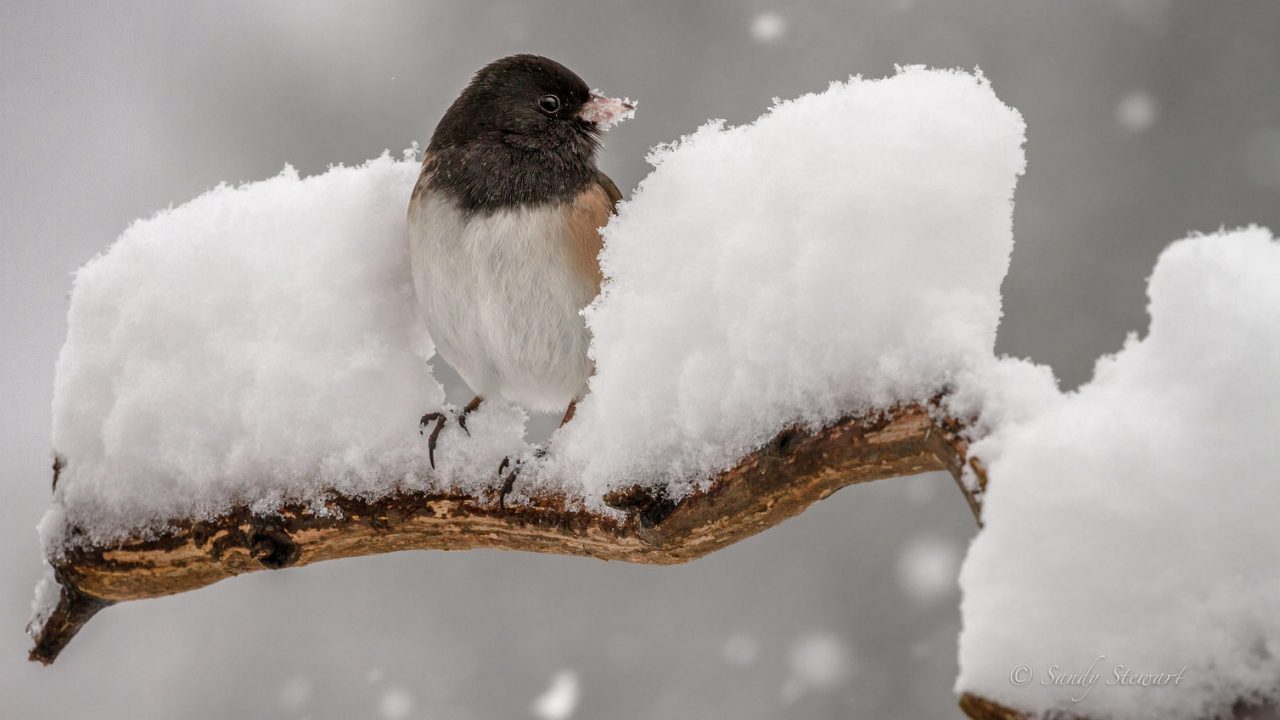
Dark-eyed Junco by Sandy Hill via Birdshare.
On cold winter days I am always astounded that there are any birds left alive, especially considering that most winter feeder visitors weigh in around 10–25 grams (the weight of 2-5 nickels)! But it turns out that birds employ many of the same strategies I was using inside my house—plus a couple more—to keep their motors running through cold snaps.
So here’s my 5-step survival guide for birds in the cold, complete with links to some fascinating research papers (or at least they were fascinating to me, back in the days when I was a graduate student researching winter survival in Montana).
-

Blue Jays fill up on needed calories. Photo by Kathleen via Birdshare. 1. Get Some Friends To Hang Out With
Especially if the weather is crummy. Ever notice that nearly all of the birds that hang around in the winter do so in flocks? Having other birds around makes it less likely that something will eat you; more eyes = less chance of a predator sneaking up. Plus, if something does sneak up, you only have to be faster than the guy foraging next to you! Friends are also good at letting you know where the primo food is.
-

A mixed group of birds at a snowy feeder. Photo by Steve Shelasky via Birdshare. 2. Eat. As Much As Possible
Park yourself in front of a feeder, some seedy plants, or anywhere there is food (preferably the heaviest, fattiest foods possible, like black-oil sunflower and suet, yum!) and consume. If anyone gets in your way, chase them off and keep eating–unless, of course, they chase you off first. However, don’t eat too much, because it also makes you slower and more likely to get eaten.
-

A fluffed up Black-capped Chickadee. Photo by Mike Wisnicki via Birdshare. 3. When You Can’t Eat More, Get Puffy And Rest
Your fluffy down feathers help complete the food + feathers = warmth equation. With food in your belly, you can use your metabolism to generate heat. Feathers, in addition to keeping cold air away from your skin, do a great job of trapping body heat instead of letting it dissipate. If you get the chance, tuck a foot or a whole leg up in there. But if you’re a woodpecker–tough luck, because you don’t have any down feathers.
-

A Downy Woodpecker in the wind. Photo by Barbara Lynne via Birdshare. 4. Stay Out Of The Wind
Here’s an important hint: if the wind is blowing, go to the other side of the tree and avoid it. Seems simple, right? But it works–trust me (or trust Dr. Thomas Grubb and his 1977 treatise Weather-dependent foraging behavior of some birds in a deciduous woodland: horizontal adjustments). And for any birders out there—you might be surprised how often you see birds doing this (whether to dodge wind or to avoid rain or hot sun) once you start looking for it.
-

An Eastern Screech-Owl roosting in a tree cavity. Photo by avicentric via Birdshare. 5. Roost In A Cavity
You’ll never find a warmer spot to sleep than in your own down feathers, nestled in a nook small enough that you can warm it up with any extra heat that does escape. Old woodpecker cavities, crannies beneath the eaves of houses, even a tunnel in the snow… they’re all warmer than spending the night (literally) out on a limb. As an additional trick, some small birds such as kinglets and chickadees can drop their body temperature and go into controlled hypothermia to save energy.
-

Eastern Bluebirds at a suet feeder. Photo by Bob Vuxinic via Birdshare. 6. (Bonus Step) Put It All Together
Finally, whenever possible, combine guidelines 1-4 for the ultimate in energy-saving & crop-filling goodness (as illustrated here by these puffy Eastern Bluebirds, perched comfortably within bill’s reach of a cake of fatty suet).
